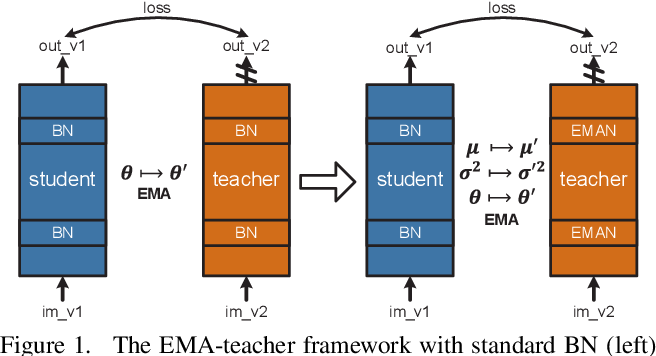Exponential Moving Average
Exponential Moving Average
Easy:
Let’s think of the Exponential Moving Average (EMA) like a magical backpack that can help you remember important things, but it gives more importance to the most recent things you put inside.
Imagine every day you put a new item in your backpack, like a toy or a book. You want to remember all the items, but you want to remember the newer items better because they are more exciting and relevant.
Here’s how your magical backpack works:
- Recent items are more important: The backpack gives more attention to the items you added recently. So, if you put a new toy in today, the backpack remembers it really well.
- Older items are still remembered but less important: The items you added a while ago are still remembered, but they don’t get as much attention as the newer ones.
- Blending old and new: Each time you add a new item, the backpack blends this new item with the ones already inside. This way, the backpack has a nice mix of everything but keeps the focus more on the recent items.
In deep learning, the EMA is like this magical backpack. It helps computers remember things (like learning weights or data points) in a way that gives more importance to recent information while still keeping a bit of the old information. This helps the computer make better decisions based on the most relevant and up-to-date information.

Moderate:
An Exponential Moving Average (EMA) is a type of moving average that places a greater emphasis on the most recent data points in a dataset. Unlike simple moving averages, which give equal weight to all data points within a specified window, EMA assigns weights such that newer data points have a higher influence on the overall average calculation.
To compute an EMA, you need to specify two parameters: the smoothing factor (also known as alpha), which determines the degree of weight given to new data points; and the initial value of the EMA itself. The general formula for calculating an N-period EMA is:
EMA = Initial Value + ((Current Price — Previous EMA) x Smoothing Factor)
The smoothing factor typically ranges between 0 and 1, with larger values indicating a stronger preference towards more recent data points. For example, if the smoothing factor is set to 0.2, then 80% of the previous EMA value will be retained, while the remaining 20% will come from the difference between the current price and the previous EMA.
One key advantage of EMA over other types of moving averages is its ability to respond quickly to changes in the underlying trend. Because EMA gives more weight to recent data points, it tends to react faster to sudden shifts in market conditions compared to simple moving averages. As a result, EMA is often preferred in technical analysis for identifying short-term trends and generating buy/sell signals.
Overall, EMA is a useful tool for analyzing time series data and identifying patterns in financial markets. Its flexibility and adaptability make it a popular choice among traders and analysts seeking to gain insights into dynamic systems.

Hard:
The Exponential Moving Average (EMA) is a type of moving average that gives more weight to recent data points than older ones. It’s like taking a running average, but instead of giving equal importance to all data points, it adjusts the influence of the oldest observations by applying weighting factors which decrease exponentially.
Here’s a simpler explanation:
Imagine you want to know how fast a car is going. You could take the speed at one moment, then another, and so on. However, if you want to understand the trend — whether the car is speeding up, slowing down, or maintaining a steady pace — you’d rather look at a series of speeds over time. Now, if you give more importance to the speeds measured recently compared to those taken a long time ago, you’re using something similar to an Exponential Moving Average.
How EMA Works
- Start with a Simple Moving Average (SMA): First, calculate the average of the last N data points without any weighting. For example, if you have the last 5 speeds of the car, you add them all together and divide by 5.
- Apply Weighting: Next, you multiply each data point by a factor that decreases over time. This means the most recent data points have a greater impact on the final average than the older ones. The formula for calculating the EMA is:
EMA = (Close — Previous\ EMA) * Multiplier + Previous EMA
Where:
- `Close` is the latest data point (e.g., the latest speed measurement).
- `Previous EMA` is the EMA calculated from the previous period.
- `Multiplier` is a constant between 0 and 1, often denoted as \( \alpha \), which determines the rate at which older data points decay. - Iterate Over Time: Each new data point recalculates the EMA, giving more weight to the recent data and less to the older data.
Why Use EMA?
- Reactivity: EMA responds faster to price changes than SMA because it places more emphasis on recent data.
- Smoothing: Despite being more reactive, EMA still provides a smoother curve than raw data, making trends easier to identify.
- Trend Identification: In financial markets or time series analysis, EMAs are often used to identify the direction of the trend. For example, a stock’s price might be considered bullish if its EMA is rising.
Example in Python
Let’s calculate the EMA for a simple dataset:
```python
import numpy as np
def calculate_ema(data, window):
multiplier = 2 / (window + 1)
ema = np.zeros_like(data)
ema[0] = data[0]
for i in range(1, len(data)):
ema[i] = (data[i] — ema[i-1]) * multiplier + ema[i-1]
return ema
# Example data
data = np.array([1, 2, 3, 4, 5], dtype=float)
# Calculate EMA with a window size of 3
window_size = 3
ema = calculate_ema(data, window_size)
print(“Data:”, data)
print(“EMA:”, ema)
```
This code calculates the EMA for a simple array of numbers, demonstrating how the EMA gives more weight to recent values.

Comments
Post a Comment